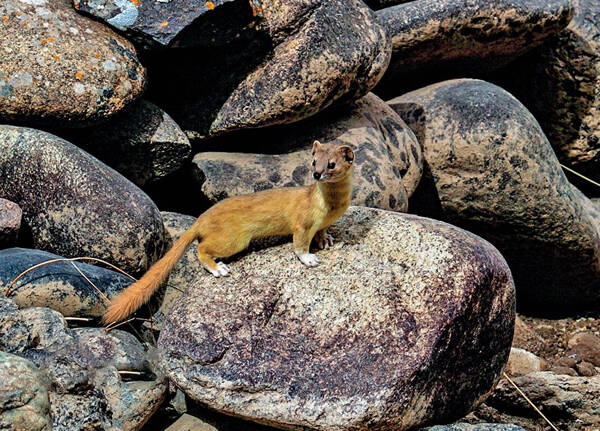Mustela altaica
IUCN
LCBasic Information
Scientific classification
- name:Mustela altaica
- Scientific Name:Mustela altaica,Mountain Weasel,Rat
- Outline:Carnivora
- Family:mustelidae mustelae genus
Vital signs
- length:22-29cm
- Weight:80-350g
- lifetime:8-10years
Feature
They are not good at digging holes and often use the holes of other animals such as rats as their nests.
Distribution and Habitat
Distributed in Bhutan, China, India, Kazakhstan, Kyrgyzstan, Mongolia, Pakistan, Russia, Tajikistan.
In China, it is distributed in Heilongjiang, Jilin, Liaoning, Inner Mongolia, Shanxi, Ningxia, Qinghai, Xinjiang, Sichuan, Gansu, Tibet and other places.
Muslin weasels usually live in forests, forest grasslands, alpine shrubs and meadows. They are also found in high mountain deserts at 3,000 meters and river valleys, but are more common in grassland areas.
Appearance
The body length of the fragrant weasel is 20-28cm, the tail length is 11-15cm, and the weight is 80-350g. The body is small, the body is slender, the neck is long, the limbs are short, the tail is not very thick, generally the tail is less than half the body length, and the tail hair is longer than the body hair and slightly fluffy. The integument of the plantar part is slightly longer. Semi-plantar. Both the front and rear feet have 5 toes, and the claws are slightly curved and slightly slender. The front toe pads are oval, there are three slightly rounded palm pads, and a pair of wrist pads. There are 4 pads on the back soles of the feet. The palms and toe pads are exposed. The shape of the penis bone of male animals is relatively irregular, with the base and sides flattened, but the end 1/3 is sharply bent into a hook, with an enlarged nodule protruding from the right side. The end is in the shape of a semicircular "tube". Female animals have 4 pairs of nipples.
In summ
Details
Mustela altaica (scientific name: Mustela altaica) is a small to medium-sized weasel with 4 subspecies.

Mustela altaica is mostly active alone, active during the day or at night, and is more active at dawn and dusk. It lives in caves. It likes to live in caves, but it is not good at digging holes. It often uses the caves of other animals such as mice as nests, or lives in rock crevices, piles of rocks or tree holes. There are often shelter caves and food storage caves near the cave where the offspring are born. They are alert, quick and agile, and good at running, swimming and climbing trees.
The foraging area of the weasel is relatively wide, mainly feeding on small rodents, such as pikas and yellow rats, and they also climb trees to catch small birds or dive to hunt small fish.
Weasels generally mate in March and April every year, with a gestation period of about 30-40 days, and give birth in May and June. The pups are born in the cave, with 6-8 pups per litter. The pups can live independently at two months old, reach sexual maturity at one year old, and have a lifespan of 8-10 years.
The population distribution is not scattered. This species is relatively common in its habitat, but not in large numbers, and its population is on a downward trend. The Muscicapidae is widely distributed in Tibet, China. For example, four individuals were observed three times in Linzhou and Renbu counties.
Muscicapidae is a natural enemy of many rodents in nature, and has a certain effect in eliminating the harm of rodents. It is a beneficial animal for agriculture, forestry, and animal husbandry, and plays an important role in maintaining ecological balance.
Listed in the 2008 Red List of Endangered Species of the World Conservation Union (IUCN) ver 3.1 - Near Threatened (NT).
Protect wild animals and eliminate game.
Maintaining ecological balance is everyone's responsibility!








